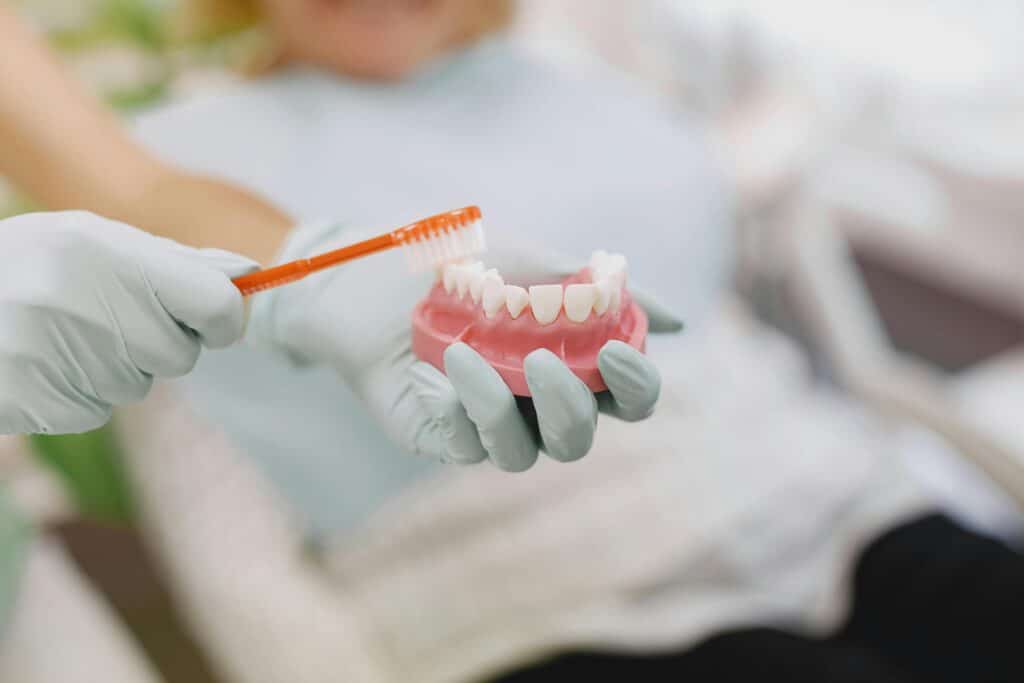Cavities are among the most common chronic diseases in children, but the good news is—they're largely preventable. At Family Smiles Dentistry, we believe in proactive care to keep your child's smile healthy and bright. Here are five effective strategies to help prevent cavities in your children.
1. Start Dental Visits Early
This isn’t just about spotting cavities. These early visits build comfort, set a strong foundation for oral health, and help your child develop trust with their provider. Dental professionals can catch subtle signs of decay or alignment issues you might miss at home.
We recommend scheduling regular pediatric dental appointments twice a year. These visits often include cleanings, exams, and fluoride treatments—all critical tools in your child’s cavity defense plan.

2. Establish a Consistent Oral Hygiene Routine
Most cavities begin because of poor brushing and flossing habits. Kids often rush, skip steps, or don’t brush long enough.
Here’s what to do:
- Help your child brush twice daily with fluoride toothpaste.
- Supervise until they can do it thoroughly on their own—usually around age 7 or 8.
- Floss daily as soon as teeth begin touching (even baby teeth!).
To make things easier, use music, toothbrush timers, or reward charts. Fluoride strengthens enamel, and floss removes the food bits and plaque that brushing can't reach.
Need guidance on techniques or products? Your hygienist can offer tips during your child’s preventive dentistry visit.

3. Cut the Sugar—It’s More Dangerous Than You Think
We all know sugar is bad for teeth. But here’s the reality: frequent snacking is often worse than a single sugary dessert.
Every time your child eats or sips something sugary (yes, even juice!), acid attacks their enamel. The more frequent those acid attacks, the greater the risk of decay.
Here’s how to stop it:
- Replace juice or soda with water.
- Stick to 3 main meals and 2 snacks per day—no grazing all day long.
- Avoid sticky candies, fruit snacks, and even dried fruits between meals.
If your child is constantly sipping juice or snacking, you need to stop this RIGHT NOW. It creates a 24/7 attack on their teeth.
For older kids, consider alternatives like sugar-free gum (with xylitol) after meals. It's a small change that makes a big difference.

4. Ask About Sealants—They're a Game-Changer
Molars (the big teeth in the back) are the most likely to get cavities. Why? Because they have deep grooves that trap food and bacteria.
One of the best protections you can give your child is a dental sealant. This thin coating covers those grooves and prevents decay before it starts.
In fact, sealants can reduce cavity risk in molars by up to 80%. It’s a quick, painless treatment usually applied during a preventative dentistry visit.
If your child has molars and no sealants, ask your dentist at the next appointment. It's one of the easiest—and smartest—ways to prevent cavities.
Suggested image: Child receiving sealant treatment.
Placement: Opening of this section.
5. Don’t Ignore the Warning Signs
This is where many parents go wrong.
If your child says “my tooth feels weird” or “it hurts when I bite”—do not wait. Early toothaches, sensitivity to cold, or visible dark spots could be signs of decay.
When caught early, a small cavity may only need a filling. But when left alone, it could escalate to needing more serious procedures like crowns & bridges or even extractions.
If your child complains about tooth pain—get them seen right away.
Pain is your warning. Listen to it.

Final Tip: Stay Consistent with Dental Visits
Even if everything seems fine, you should not skip regular checkups. Cleanings remove plaque and tartar you can’t reach at home, and checkups allow the dentist to monitor growth and detect issues before they turn into emergencies.
Want to make sure your child’s on the right track? Routine dental checkups every six months are your best defense against surprise cavities.
Summary: A Healthy Smile Starts at Home (and the Dentist)
Let’s recap the 5 smart strategies:
- Start early with dental visits.
- Build strong brushing and flossing habits.
- Reduce sugar intake and prevent constant snacking.
- Protect molars with sealants.
- Act fast if your child has tooth pain.
Don’t wait until a cavity becomes a crisis. Take control of your child’s dental health now.
Have questions or ready to book your next visit?
Contact us today—we’re here to help every step of the way.



